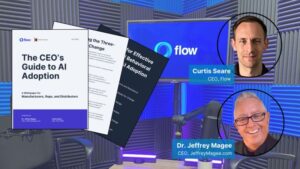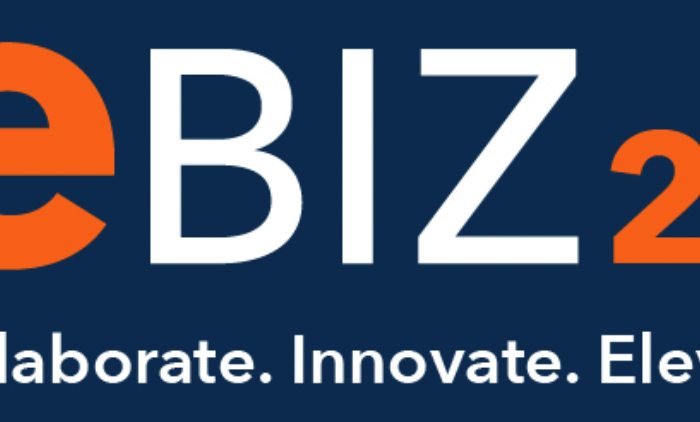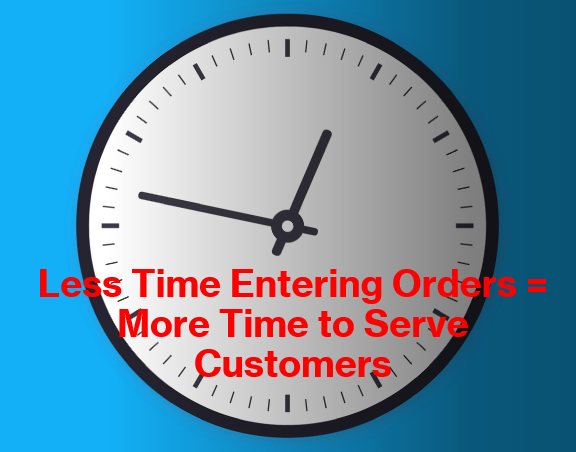AI Adoption Requires Embracing Change
 The concept of digital transformation, let alone AI, as a future driver for your organization is probably a folly unless …
The concept of digital transformation, let alone AI, as a future driver for your organization is probably a folly unless …
You have a leader, and leadership team, which believes in change.
There are two key words in the above sentence … “leadership” and “change.”
Leadership infers vision, an ability to perceive “need,” an entrepreneurial mentality that desires growth, and empathy for people.
“Change” infers a preference for a different state of being, for improvement. And it infers that the “leadership” will communicate, and drive, the desire for a change in state throughout the organization to capture adoption and then utilization.
Unfortunately, most organizations embark on these journeys because it is expected. Few effectively achieve it because it takes dedication, commitment, and patience while requiring endurance.
Personally, I believe “digital transformation” is a catchy marketing phrase. Transformation is a “change in form” and infers in a timely manner. No digital initiative is conceived, developed, and implemented in a timely manner. “Digital transformation” is really a journey and hence “digital evolution” is more appropriate, which is possibly why Wesco is using the phrase “tech-enabled.”
 Given this. I was intrigued by a white paper commissioned by FlowRMS. Curtis Seare, CEO of FlowRMS, who has significant experience with manufacturer and rep technology initiatives, sees some companies thrive with AI while others struggle. He’s observed that the issue is not the technology. It probably isn’t development of a strategy. It’s the ability to conceive of, and drive, change.
Given this. I was intrigued by a white paper commissioned by FlowRMS. Curtis Seare, CEO of FlowRMS, who has significant experience with manufacturer and rep technology initiatives, sees some companies thrive with AI while others struggle. He’s observed that the issue is not the technology. It probably isn’t development of a strategy. It’s the ability to conceive of, and drive, change.
He teamed with Dr Jeffrey Magee and together they developed a white paper, video and CEO Checklist to AI Adoption as well as an assessment tool to help companies achieve their technology goals by conquering change management challenges.
The content is applicable for manufacturers, reps, and distributors.
And they’ve made all of it available, for free. All you need to do is click here.
Given that the white paper is about AI, I thought it only “fair,” and Curtis and Dr. Magee agreed, to let AI write a summary:
 Embracing AI in Manufacturing: Insights from the CEO’s Guide to AI Adoption
Embracing AI in Manufacturing: Insights from the CEO’s Guide to AI Adoption
In the rapidly evolving landscape of manufacturing, the integration of artificial intelligence (AI) is no longer a futuristic concept but a pressing necessity. The white paper titled “The CEO’s Guide to AI Adoption,” authored by Dr. Jeffrey Magee and Curtis Seare, provides a comprehensive roadmap for manufacturers, reps, and distributors to navigate the complexities of AI implementation. This guide emphasizes the importance of aligning AI initiatives with personal benefits, addressing employee concerns, and fostering a culture of innovation.
The Transformative Era of Manufacturing
The manufacturing industry is on the brink of a transformative era, driven by advancements in AI and technology. As organizations strive to improve efficiency, streamline operations, and maintain competitiveness, it becomes evident that technological upgrades alone are insufficient. A fundamental shift in culture and behavior is essential for fully capitalizing on the opportunities presented by AI.
Dr. Magee and Seare highlight that adopting AI is not merely a technical task; it requires a strategic approach that addresses employee concerns, such as fears of job displacement and resistance to change. The authors argue that effecting cultural and behavioral change is key to overcoming these challenges and ensuring successful AI adoption.
Understanding Employee Concerns
One of the primary barriers to AI adoption in manufacturing is employee resistance, often stemming from fear and uncertainty. The white paper emphasizes the importance of open communication to alleviate these fears and build trust among employees. Transparent discussions about the changes occurring within the organization and the rationale behind them are crucial.
The authors suggest that leaders should clearly articulate what changes are happening and why they are necessary. For instance, explaining how AI can automate repetitive tasks, reduce errors, and free up time for more meaningful work can help employees understand the benefits of AI adoption. It is essential to emphasize that AI is a strategic move to enhance the organization’s competitiveness rather than a step toward workforce reduction.
Aligning AI Initiatives with Personal Benefits
To foster a positive perception of AI, organizations must connect AI initiatives to personal benefits for employees. The white paper outlines four primary reasons people embrace change: Better, Faster, Different, and Cost-Effective.
- Better: AI can improve the quality of work and outcomes, leading to higher job satisfaction.
- Faster: By accelerating processes and reducing workloads, AI allows employees to focus on higher-value activities.
- Different: AI introduces exciting new ways of working, breaking the monotony of traditional tasks.
- Cost-Effective: Efficiencies gained through AI can lead to financial benefits, enhancing job security and providing resources for employee development.
By framing AI adoption in terms of these personal benefits, organizations can create a more compelling case for change.
Using Analogies and Metaphors
To demystify AI and make it more approachable, the authors recommend employing relatable analogies and metaphors. For example, comparing AI adoption to the integration of smartphones illustrates how these tools have become indispensable without replacing human interaction. This approach helps employees understand that AI is a natural progression in technological advancement, enhancing everyday tasks rather than replacing them.
Another effective analogy is likening the transition to AI to upgrading from a horse and buggy to a freight train. This emphasizes the need for foundational changes to achieve significant efficiency gains and helps employees visualize the transformative potential of AI.
Addressing Fears Directly
Acknowledging common concerns such as job displacement and skill obsolescence is crucial for fostering a culture of acceptance around AI. The white paper encourages leaders to provide reassurances through evidence and clear plans for workforce development. For instance, discussing how AI creates opportunities for upskilling and career advancement within the organization can alleviate fears and promote a positive outlook on AI adoption.
Demonstrating Early Wins
One of the most effective strategies for encouraging broader AI adoption is to focus on achieving quick, tangible successes. By implementing AI in areas where quick, positive outcomes can be realized, organizations can build momentum and demonstrate the technology’s value. For example, automating a time-consuming administrative task can showcase efficiency gains and free up employee time for more meaningful activities.
Sharing these early wins through internal communications and recognizing the teams involved reinforces positive perceptions of AI and motivates others to engage with new technologies. This approach not only alleviates skepticism but also fosters a culture of innovation and continuous improvement.
Encouraging Dialogue and Feedback
Creating open channels for employees to express concerns, ask questions, and provide feedback is essential for fostering a culture of trust and collaboration. The authors suggest utilizing town hall meetings, suggestion boxes, or anonymous surveys to facilitate this dialogue. By actively listening and responding to employee input, leaders demonstrate respect and a willingness to address issues.
For instance, if employees are worried about job security, openly discussing how AI will change roles and the opportunities it presents for professional growth can help alleviate concerns. This proactive approach to communication fosters a sense of ownership and engagement among employees.
Sharing Success Stories
Providing real-life examples of how AI has positively impacted similar organizations or departments within the company can further reduce skepticism and build confidence in AI initiatives. Sharing tangible outcomes helps employees visualize the benefits of AI and reinforces the message that AI is a tool designed to augment human capabilities, not replace them.
Conclusion
The “CEO’s Guide to AI Adoption” serves as a valuable resource for manufacturers, reps, and distributors seeking to navigate the complexities of AI implementation. By addressing employee concerns, aligning AI initiatives with personal benefits, and fostering a culture of innovation, organizations can successfully embrace AI and unlock its transformative potential.
As the manufacturing industry continues to evolve, the strategic adoption of AI will be critical for staying competitive and achieving sustainable success. By following the insights outlined in this white paper, leaders can pave the way for a future where AI enhances productivity, drives innovation, and empowers employees to thrive in a rapidly changing landscape.
Take Away
I encourage you to review the white paper, watch the video, and utilize the checklist and assessment tools to evaluate yourself and your organization.
While there is much discussion about AI, don’t limit yourself to “talking / thinking” about AI. There are beginning to be tools, some specific to the industry, which are utilizing AI. Be curious and explore these. Engage with the companies. Explore. Learn. Become educated about the possible. Just because you are in the discovery mode does not mean you need to be in the buying and deployment mode. (Think of it this way, how frequently do you quote and requote projects and never win them?)
If you are interested in some companies to consider exploring, give me a call and we can discuss. A couple of companies that you should consider are, if you are a rep, FlowRMS. Another that supports reps, lighting agents, and distributors, is Parspec. If you are an Infor distributor, reach out to them about their AI enabled tools (and if you’re considering a new ERP system, check them out … and if you need a contact point, let me know.)
In the words of John Maxwell, “Growth is optional, Change is inevitable” or consider Winston Churchill who said ““To improve is to change; to be perfect is to change often.”
Help your company grow. Embrace change.
Click here to download the CEO’s Guide to AI Adoption.























